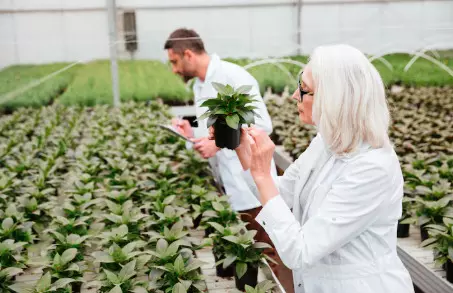Integrated Strategies for Managing Sclerotinia Stem Rot in Soybean Cultivation
Integrated Strategies

Being active in farming for more than 30 years first in vegetables and currently in grains has taught me that the path to sustainable farming depends on maintaining equilibrium. Good soil synchronizes successfully with correct cultural practices and beneficial biological partners in order to create balanced agricultural systems. The most difficult farming lesson I acquired throughout multiple years of experience was learning that fighting Sclerotinia stem rot with excessive spraying never succeeds. Sclerotinia stem rot requires outwitting the disease rather than spraying it more.
Any soybean producer has faced this problem in their fields. White mold or Sclerotinia stem rot remains as a severe fungal disease which eliminates yield production in whole growth areas. We now have access to superior tools through the combination of integrated strategies and Trichoderma harzianum alongside microbial solutions.
What Is Sclerotinia Stem Rot?
Sclerotinia stem rot arises from Sclerotinia sclerotiorum infection which helps to survive because it forms sclerotia in the soil. The sclerotia can survive dormant conditions for years to start growing when proper wet and humid weather arrives. The fungal infection leads to vascular disruption that causes stem wilt and subsequent plant death by rotting.
Sclerotinia stem rot has optimal conditions to proliferate during summer rainy periods in dense crop areas making it difficult to control after its initial spread.
Cultural Practices Still Come First
Biological control methods rely heavily on appropriate cultural practices for their success according to what I will explain in the following points. Trichoderma harzianum demonstrates this matter of fact alongside all other compounds we employ in our fields.
The following cultural practices form my approach to decrease Sclerotinia risks.
- I plant soybeans no more than three years in each field while avoiding recent locations where we grew canola or sunflowers since these crops host related diseases.
- The spaces between rows should be expanded because increased air circulation helps decrease the environmental conditions where fungal spores multiply.
- The early morning water delivery technique allows leaves to dry fast from water and thus reduces disease infection occurrence.
Stand-alone usage of these steps does not supply enough protection against fungal growth. Soil borne disease treatment requires fungicides especially biofungicides to fulfill their protective role.
The Role of Trichoderma harzianum in Biological Control
Research activities at my local university about microbial agriculture brought me into contact with their specialists. Dr. Marta Lin in plant pathology led me to Trichoderma harzianum because it shows effective biocontrol abilities against the soil borne pathogen Sclerotinia.
According to her explanation Trichoderma spends its time doing more than waiting in the soil. The fungal species Trichoderma harzianum establishes itself in the plant roots by colonizing the area and strongly fights pathogens while prompting protective responses from the plant. It’s life protection.”
All my activities now contain productos con trichoderma in my pre-plant processes. This formulized Trichoderma fungicide serves to defend roots against pathogens and boosts their health and strength.
The wide-area soil treatment requires the Novobac Trichoderma harzianum product as an ideal solution. I distribute this product twiceto prepare the soil before planting since it enables beneficial fungi to work before Sclerotinia appears.
A Sustainable, Integrated Approach
Biofungicide adoption requires us to combine old practices with modern biological methods. Application of proper crop rotation together with canopy management techniques and microbial control has led to major disease pressure reduction in my farming operations.
My healthy soybeans share the soil health benefits with my soil through this practice. Biologicals create long-term resistance in agricultural systems while avoiding the practice of implementing quick but temporary solutions.
Final Thoughts
Sclerotinia stem rot exists as a difficult problem which growers can conquer successfully. A combination of soil health commitment along with sustainable tools and proper knowledge makes it possible to sustain productivity and resilience in our fields.
If you want to test biofungicida for soil borne diseases with microbial methods you should begin with Trichoderma harzianum which Novobac offers. This approach leads agriculture into an intelligent direction while fostering natural harmony over environmentally destructive practices.

